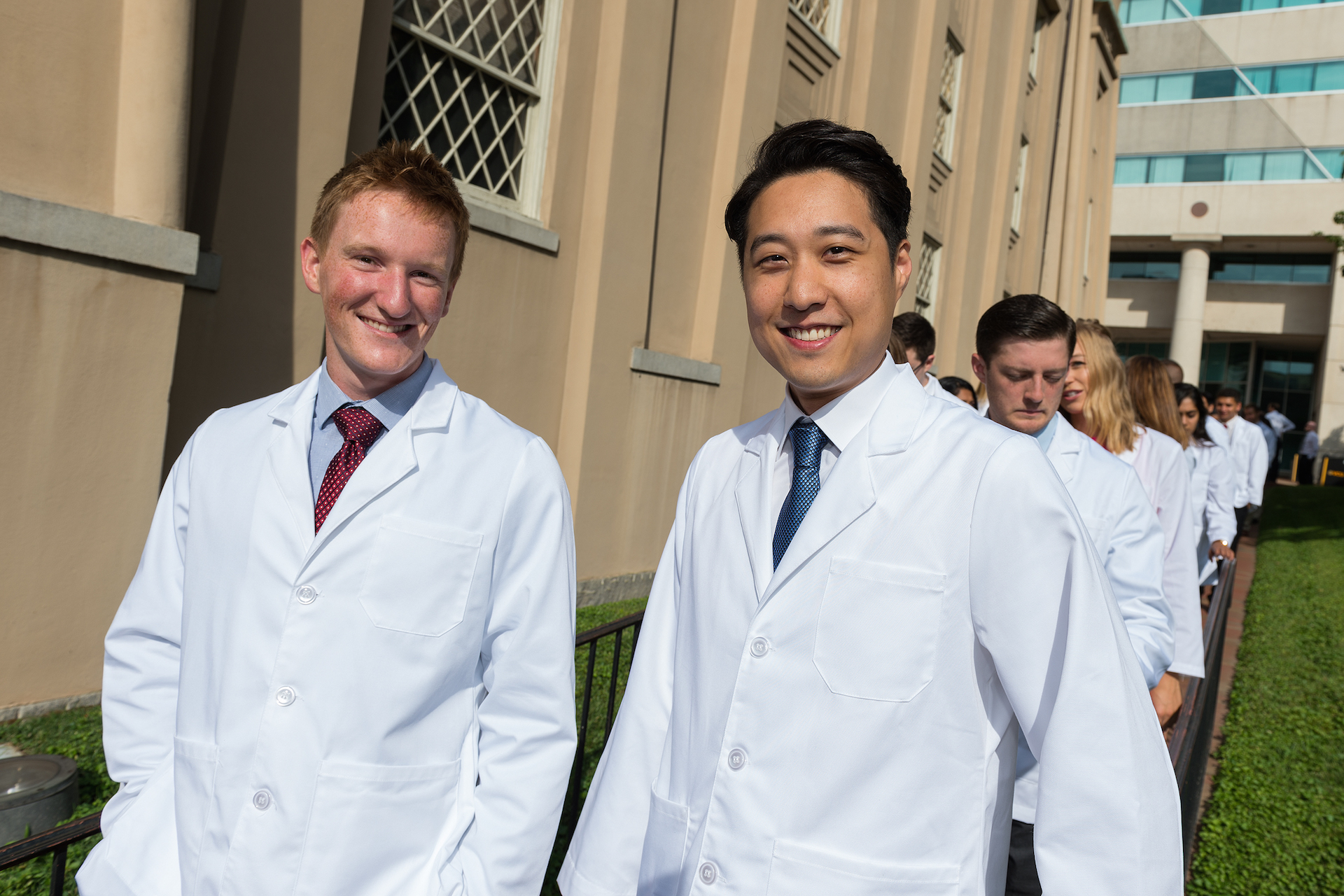About the LCME
During the 2023-2024 academic year, the Liaison Committee on Medical Education, or LCME, will conduct a site visit to assess the VCU School of Medicine and its M.D. program.
The LCME is the only national accrediting body for medical schools, with an established set of standards all institutions must comply with in order to achieve and maintain accredited status. Accreditation is required in the Commonwealth of Virginia for licensing graduates and receiving federal financial aid, and only graduates of LCME-accredited schools are eligible to match into residency programs accredited by the Accreditation Council for Graduate Medical Education, or ACGME.
The medical education program at VCU School of Medicine is accredited by the Liaison Committee on Medical Education and has been continually accredited since the LCME’s founding in 1942. The program was previously accredited by the Southern Association of Colleges and Schools Commission on Colleges. Accreditation status can be verified with the LCME Secretariat at lcme@aamc.org.
Read our LCME newsletter
See all archived versions of The Standard Bearer newsletterThe Accreditation Process
The LCME accreditation process consists of four components:
- Data collection instrument, or DCI (learn more here)
- Faculty-led institutional self-study
- Student-led independent student analysis
- Completion and review of the accreditation survey visit
A successful LCME accreditation process depends on the efforts of our entire medical school community. As the visit approaches, the School of Medicine will engage in an intense period of self-study and evaluation to highlight our strengths and identify areas for growth. We encourage faculty, staff and students to get involved with the process by joining subcommittees, volunteering with school initiatives and connecting with colleagues in other departments and units to learn more about our school.
LCME Standards
The LCME operates with 12 accreditation standards, each with an accompanying set of elements. Learn more about the accreditation standards and elements here.
A medical school has a written statement of mission and goals for the medical education program, conducts ongoing planning and has written bylaws that describe an effective organizational structure and governance processes. In the conduct of all internal and external activities, the medical school demonstrates integrity through its consistent and documented adherence to fair, impartial and effective processes, policies and practices.
A medical school has a sufficient number of faculty in leadership roles and of senior administrative staff with the skills, time and administrative support necessary to achieve the goals of the medical education program and to ensure the functional integration of all programmatic components.
A medical school ensures that its medical education program occurs in professional, respectful and intellectually stimulating academic and clinical environments, recognizes the benefits of diversity and promotes students’ attainment of competencies required of future physicians.
The faculty members of a medical school are qualified through their education, training, experience and continuing professional development and provide the leadership and support necessary to attain the institution's educational, research and service goals.
A medical school has sufficient personnel, financial resources, physical facilities, equipment and clinical, instructional, informational, technological and other resources readily available and accessible across all locations to meet its needs and to achieve its goals.
The faculty of a medical school define the competencies to be achieved by its medical students through medical education program objectives and is responsible for the detailed design and implementation of the components of a medical curriculum that enable its medical students to achieve those competencies and objectives. Medical education program objectives are statements of the knowledge, skills, behaviors and attitudes that medical students are expected to exhibit as evidence of their achievement by completion of the program.
The faculty of a medical school ensure that the medical curriculum provides content of sufficient breadth and depth to prepare medical students for entry into any residency program and for the subsequent contemporary practice of medicine.
The faculty of a medical school engage in curricular revision and program evaluation activities to ensure that medical education program quality is maintained and enhanced and that medical students achieve all medical education program objectives and participate in required clinical experiences and settings.
A medical school ensures that its medical education program includes a comprehensive, fair and uniform system of formative and summative medical student assessment and protects medical students’ and patients’ safety by ensuring that all persons who teach, supervise and/or assess medical students are adequately prepared for those responsibilities.
A medical school establishes and publishes admission requirements for potential applicants to the medical education program and uses effective policies and procedures for medical student selection, enrollment and assignment.
A medical school provides effective academic support and career advising to all medical students to assist them in achieving their career goals and the school’s medical education program objectives. All medical students have the same rights and receive comparable services.
A medical school provides effective student services to all medical students to assist them in achieving the program’s goals for its students. All medical students have the same rights and receive comparable services.
School of Medicine Policies
These policies reflect the regulatory standards and mandates that students and faculty must follow for compliance reasons. Some policies pertain specifically to students, while others pertain to educators, administrators and specific units within the medical school.

